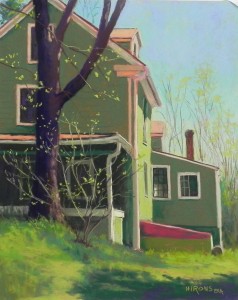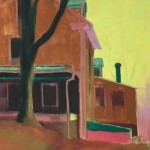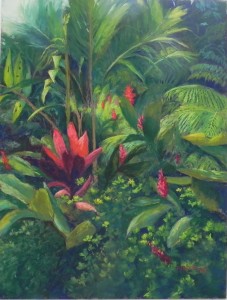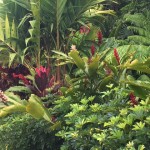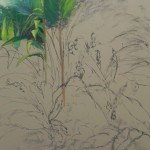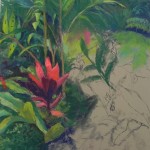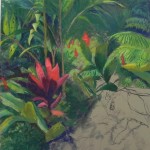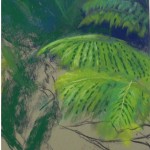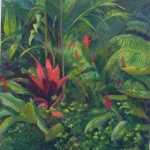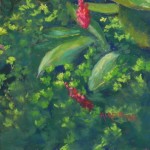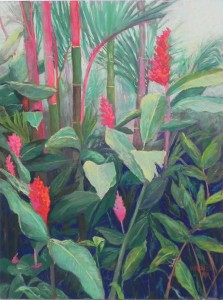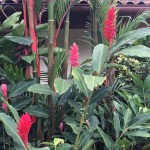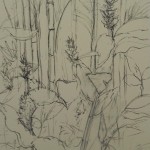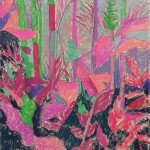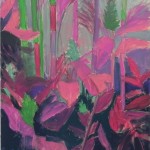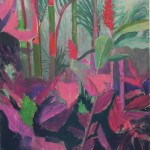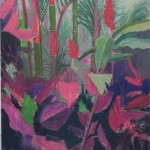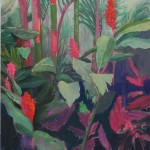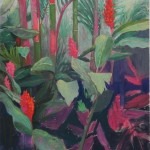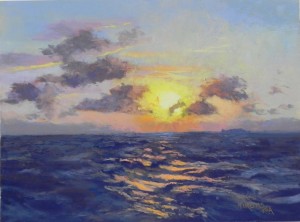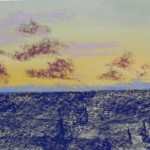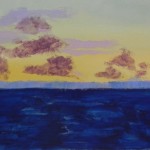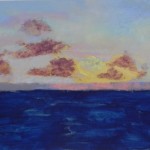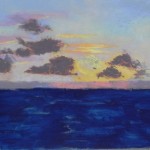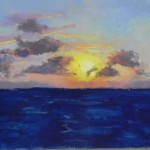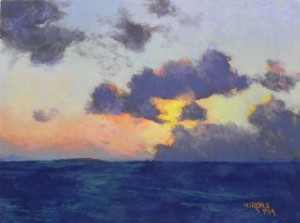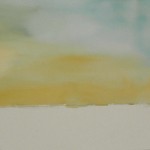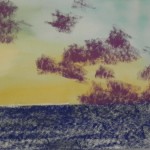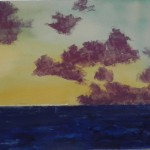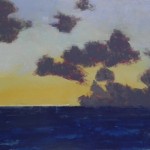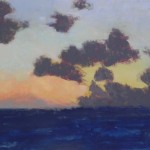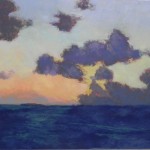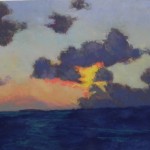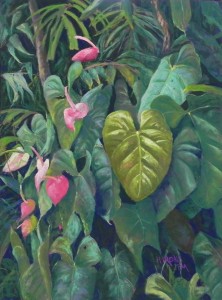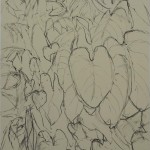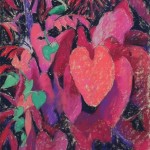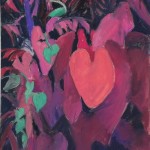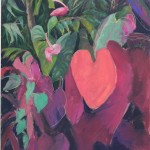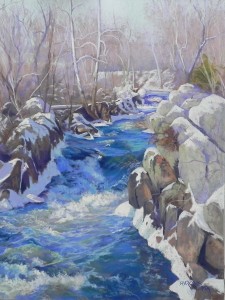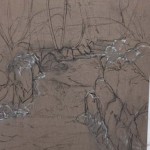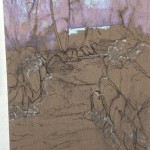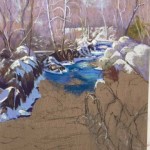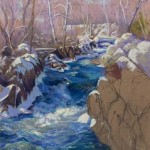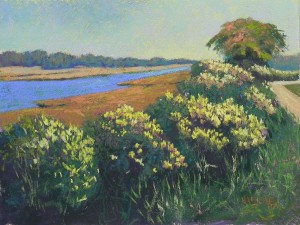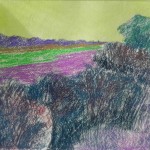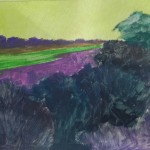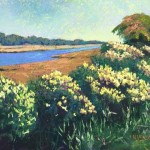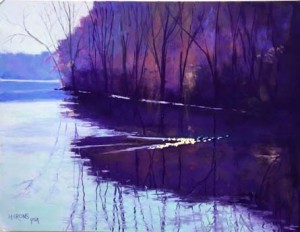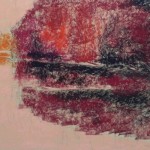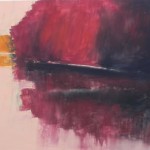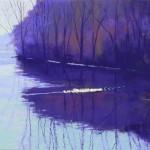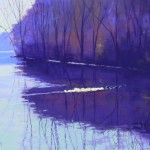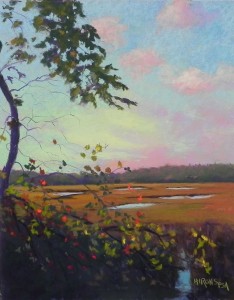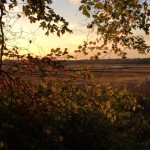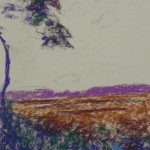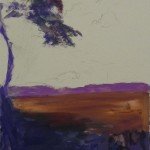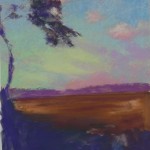Last weekend we had our semiannual Open Studios and I knew exactly what I’d paint. I took a picture a year ago that I found last fall and did a drawing of. And finally, I was ready to paint it. I used a mounted 20 x 16 UART board from Dakota and did the drawing on Friday night. On Saturday I came in and began the underpainting. I decided to use a warm brown of the same value under the green of the house, which turned out to work perfectly. I used my typical yellow green for the sky and was pleased with this as well. What really worked was the windows. I put in a dark, then a light frame. Then I used a wide brush with a lot of alcohol and brushed it down with a vertical stroke, not worrying about the details. It worked really well. The red under green/green under red in the bulkhead at right also worked.
I was doing all of this while people were coming in to see the studio and talk to me–more people on Saturday than Sunday. So I was just a little distracted! I put in the sky and liked it, but then quickly threw in some trees that were terrible. Later I brushed it down and put in what you see which I was much happier with. It made it clear to me how difficult it is to paint while people are coming in!
What I loved about the original photo was the position of the house and the orange trim and reflected light. AND the bush in front of the tree and gave life to the picture. In the photo, there was a large evergreen going up the right side, and there was a driveway on the right. I decided to dispense with both of these and was very happy with the results. I like the “swoop” of the dark shadow at bottom leading up to the tree and bush and the light hitting the right side of the house. I felt that this painting was very successful because of the energy and spirit that it conveys. It’s primarily green but there is enough orange and red to give it balance.
I haven’t mentioned the most important part–the window! What I really loved about the photo was that there was light showing in the window against the lit side of the building. This gives an opening to the inside of the house and perhaps a far side window. I used various light grayed green Giraults in it and it worked perfectly. This is a house portrait and the windows are the “eyes” of the house. Having the light in the one window was just perfect.
For the house I used Giraults. For the sky, grasses, tree and bright leaves, I used various soft pastels, including Unisons and Ludwigs.
When was the last time you saw a bulkhead? I’m surprised I even remember the term!!!
Happy spring to you all.

